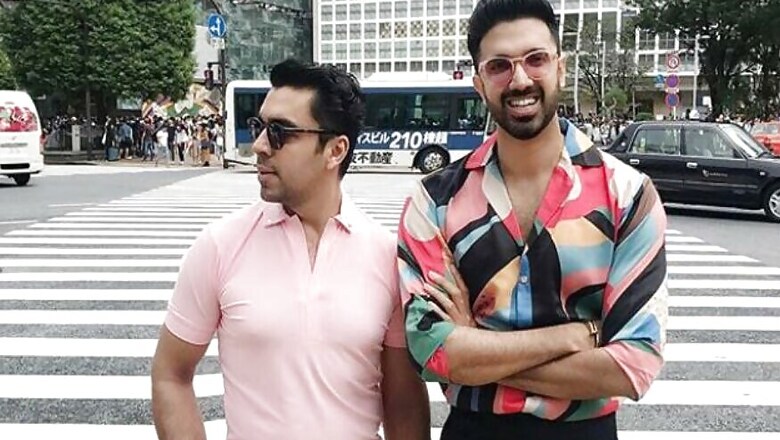
views
Indian designers can benefit from the country's GST policy says Narresh Kukreja from the Shivan & Narresh designer duo. He believes if designers don't take advantage of the situation, they will "regret" it in the long run.
The current GST rate on designer goods is 12 per cent.
"I feel we are very fortunate that with the current GST policies and nationalist policies that we have, that makes international luxury brands very expensive to come to our country. It gives a boost for domestic luxury brands," Narresh told IANS. "If Indian designers do not use this opportunity that we have, in future they will really regret because once our market becomes very competitive with international brands, it's a tougher challenge for Indian luxury brands in that regard," he added.
Shivan and Narresh, primarily known as India's first luxury swimwear brand, forayed into the market for children's wear with the online luxury platform Little Tags, where they have focussed on swimwear and nightwear for children.
On the current position of Indian kidswear market on the global map, Narresh says India is catching up but designers on the home turf took time to "realise the potential market".
"These steps that we are behind, we will catch up with them very quickly because the millennial parents with kids are very well-versed with what is happening, they are well-travelled and completely exposed to social media and of what is happening outside. So, the expectation from the brand and from the kind of life they want to live, is exactly the same as outside," said Narresh. "So, it's just a matter of right offerings. It is a question of supply and demand. They are demanding to be the way international market goes in this product category and supply is going to follow," he added.
As a luxury holiday brand, Shivan Bhatia and Narresh started their journey with catering for women. They extended their line to men, and now they even cater to children.
Talking about the "huge" demand in kidswear, Narresh said: "Mothers used to say they wanted the same swim suit for their daughter or son. Whenever they went on holidays, they wanted similar clothes. 'Twinning' is a huge concept. More importantly, they wanted their child to experience the same sense of holiday that the parents experienced."
On the difference between designing for children and for the elders, Narresh said: "When you design for kids, especially when you design for children with millennial parents because millennials are very different in ideology from our parent's generation, it's different.
"For us, luxury is not about the products, it's about the experience that we want to capture and having babies is a part of the experience," he said.
Narresh said social media has driven the trend of clicking pictures and documenting the life of the baby while growing up.
"Clothes become inevitable in that process. Ease and functionality becomes important when you travel with your baby for the millennial couple. That is the experience they want to pay for. "The most paramount factor when you are designing for the kids is that kids have to pick it up themselves. They are very sharp and intelligent and they really have a mind of their own from a very young age. So, you are not only trying to appease the mother, but the kids first. Because if the child doesn't like it, the mother is not going to buy it," he added.
The designer also said products must graphically look "very strong" and "photograph well" because children are attracted to good colours and prints.
"To simplify your design but make it appealing to the kid, you have to think like one. All your logic of fancy designs goes out of the window. To pick up prints, elements and design that would attract a child."


















Comments
0 comment